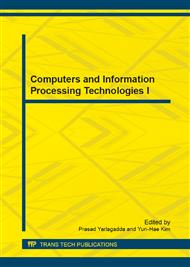p.183
p.187
p.191
p.196
p.201
p.205
p.209
p.213
p.217
Fault Diagnosis of Transformer Based on RBF Neural Network
Abstract:
According to the characteristics of fault types of the transformer ,RBF neural network is used to diagnose transformer fault. The paper regards six gases as inputs of the neural network and establishes RBF neural network model which can diagnose six transformer faults: low temperature overheat, medium temperature overheat, high temperature overheat, low energy discharge, high energy discharge and partial discharge . The Matlab simulation studies show that transformer fault diagnosis model based on RBF neural network diagnosis for failure beyond the traditional three-ratio method. The rate of the transformer fault diagnosis accuracy reaches 91.67% which is also much higher than the traditional three ratio method.
Info:
Periodical:
Pages:
201-204
Citation:
Online since:
June 2014
Authors:
Keywords:
Price:
Сopyright:
© 2014 Trans Tech Publications Ltd. All Rights Reserved
Share:
Citation:


